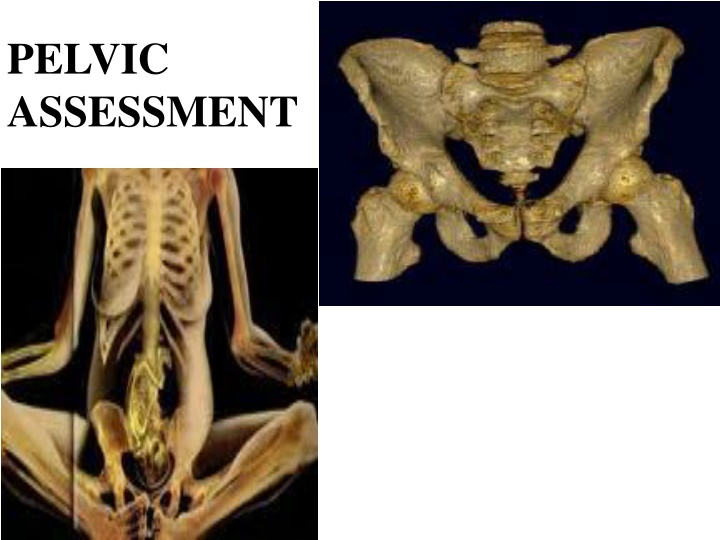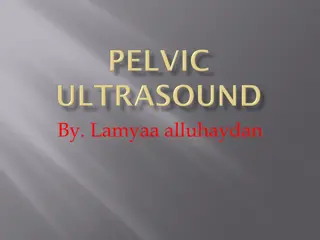
Pelvic Assessment: Types, Procedures, and Importance
Discover the significance of pelvic assessment, including types of pelvis, examination procedures, and who can perform it. Learn about the different landmarks, planes, and obstetric conjugate relevant to pelvic assessment. Explore the initial steps, articles required, and where the assessment can be conducted.
Download Presentation

Please find below an Image/Link to download the presentation.
The content on the website is provided AS IS for your information and personal use only. It may not be sold, licensed, or shared on other websites without obtaining consent from the author. If you encounter any issues during the download, it is possible that the publisher has removed the file from their server.
You are allowed to download the files provided on this website for personal or commercial use, subject to the condition that they are used lawfully. All files are the property of their respective owners.
The content on the website is provided AS IS for your information and personal use only. It may not be sold, licensed, or shared on other websites without obtaining consent from the author.
E N D
Presentation Transcript
PELVIC ASSESSMENT http://t3.gstatic.com/images?q=tbn:ANd9GcR_UXVKBBBQUR4EBJMfYHlnnnElkLvOV1JmKh_lJN3Y_YaBBcbuq1RMwFI4Ig
DEFINITION A pelvic assessment is a clinical assessment of the size and shape of the mothers pelvis by means of a vaginal examination.
Types of pelvis 1.True pelvis 2.False pelvis
FEATURES 1.State of the cervix 2.To note the station of the presenting part in relation to ischial spines. 3.To test the CPD in the non engaged head. 4.To note the resilience and elasticity of the perineal muscles.
Sacrum It is smooth, well curved & usually inaccessible beyond the 3 pieces.
Sacro-sciatic notch The configuration of the notch denotes the capacity of the posterior segment of the pelvis and the side walls of the lower pelvis.
Ischial Spines They may be prominent & encroach to the cavity there by diminishing the available space in the mid pelvis.
Posterior surface of the symphysis pubis It normally forms a smooth rounded curve. Presence of angulation or beaking indicates abnormality.
Pubic angle A. In narrow angle, it roughly corresponds abducted middle & index fingers. to fully B. The inferior pubic rami are defined, the angle roughly corresponds to the fully abducted thumb and index fingers.
Transverse diameter of the outlet It placing the knuckles of the first phalangeal knuckles clinched fist between the ischial tuberosities. is measured by inter joints of or the
Sidewalls Normally they are not easily palpable by sweeping the fingers unless convergent.
Pelvic X-Rays.. http://t1.gstatic.com/images?q=tbn:ANd9GcQMyG2UCoJ4o8WHVXekRkXiz6CPerMF-E6Oo97DKzNCCfloeTje
http://t0.gstatic.com/images?q=tbn:ANd9GcRnRUWhJl8nHaYZ7Zc4VKRkyhFMb3FWyF5Dd7qxfzlJjKGZ3fwLTEEctS4http://t0.gstatic.com/images?q=tbn:ANd9GcRnRUWhJl8nHaYZ7Zc4VKRkyhFMb3FWyF5Dd7qxfzlJjKGZ3fwLTEEctS4 NURSES ROLE http://t2.gstatic.com/images?q=tbn:ANd9GcQGJdeMLc9Shax_QcTIbWQiWQ-ZeLqPCSKQ30xWU9QWtVfIMIkpJA






















